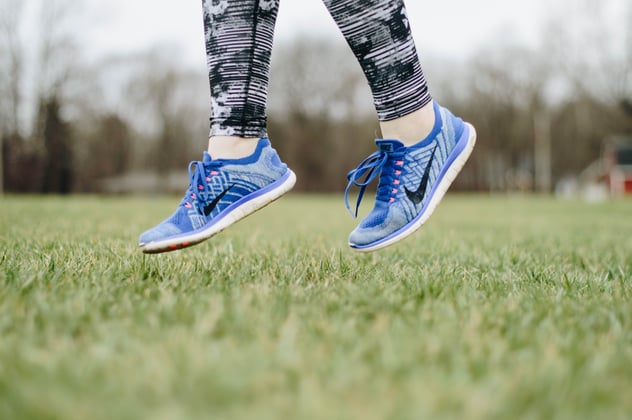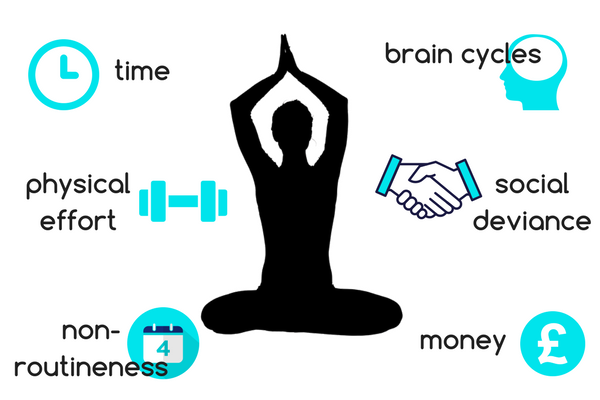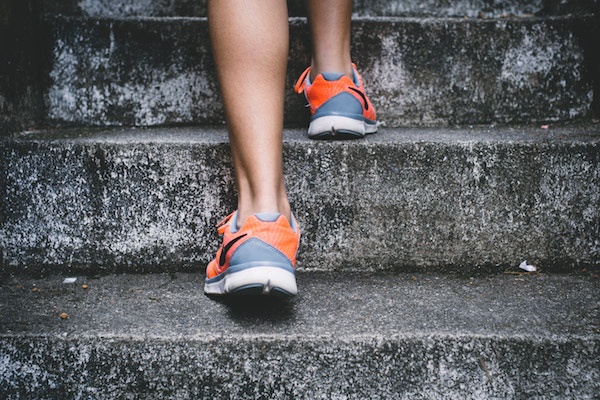Whether it’s exercise, healthy eating, deeper sleeps or keeping hydrated with zero-alcohol liquids, we’ve all got our goals for the new year. With a fresh new year lying ahead, it is the perfect time to make positive and healthy changes - time to get back into fitness post-Christmas. Be the best you that you can be!
But don’t we say this every year?

If you’re someone who makes these resolutions, only to stumble and fall by the third week of January… or you found December quickly sent you into a spiral of over indulgence and lethargy, then it’s time to get prepped to kick new year in the ass and form habits. Good habits that become second nature and no longer seem like a chore.
Sounds simples, eh? Time to crack our mindsets to get back into fitness post-Christmas, use some nifty tricks and avoid feeling overwhelmed by a January of new starts.
How to crack your mindset to get back into fitness
Our brains are complicated things which can come up with excuses, trick us into ‘doing it tomorrow’ and assigning our chores to ‘someday’ (FYI there’s no day in the week called ‘someday’).
Nir Eyal, writer and teacher of psychology, has formulated the basics of habits which involves the Hook Model. The Hook Model has four phases which can help you piece together how habits are formed and what we must consciously go through in order to make them a reality.
"Hooks are experiences designed to connect the user’s problem to a solution frequently enough to form a habit. To form a habit, people must do the behavior frequently." - Nir Eyal
We’re going to walk you through his awesome analysis so you can learn how your mind ticks and how you can get things done in the new year. Whether it’s fitness, lifestyle, diet, or even how you manage your workloads - Nir Eyal can help you form habits that you can run with beyond January.
Buckle up folks - time to dust off the ole brain and get it in gear for the new year.

Nir Eyal’s Hook Model
1. External & Internal Triggers
There are two types of triggers that spark off our behaviours:
- External triggers tell you what to do by placing information in your environment - hello Move Blog! Be sure to read up and educate yourself on way to improve yourself.
- Internal triggers tell you what to do next through associations stored in your memory - emotions are strong internal triggers. Negative emotions can be the basis of bad habits, so recognise them when you feel yourself slipping into old ways that you wish to change. Recognise them, then break them.
What you should do about your triggers:
As we tick into the new year, be sure to take a step back and recognise your emotions and how they connect to your behaviours. List out what you’re feeling when you cancel your gym date, when you overindulge with poor diet choices, when you choose Netflix over sleep - whatever your vices may be.
Without recognising your negative triggers which lead to negative behaviours, you can’t deal with them.
2. Action
We may undergo the two different triggers, but they’ll do little unless we have the ability and motivation to take action.
Motivators:
There are three core motivators which drive action - which are you familiar with?
- Seeking pleasure and avoiding pain
- Seeking hope and avoiding fear
- Seeking social acceptance and avoiding rejection
You can see that all motivators involve avoiding something of discomfort and seeking great things. But sometimes we need to undergo the discomfort to reach a pleasant goal. The thought of the gym pains you? Getting back to long lost yoga practices instills the fear? Getting back to a fitness class makes you anxious?
Short term and long term feels need to be recognised - find motivation in your long term goals and recognise that whilst the short term might not be comfortable initially, they will quickly lead to a stronger you. Both inside and out.
Ability:
Have you been triggered? Have you mustered up your motivation? Your ability to get something done now rests on these six factors:

Looking like we only get things done when the stars align? Well, a lot of these are done subconsciously, plus you can prepare in order to make these click into place easily.

Set aside a specific time slot to dedicate to your fitness. Be sure to hop on the Move app and book yourself into classes and upload your bookings into your calendar. If you set your plans in stone and treat it like an appointment that can’t be canceled, then you’re more likely to attend. Getting your own routine can begin to combat the ‘non-routineness’ that could be blocking your ability to get it done.

Budget can be a big barrier to getting fitness in, so be sure to look at what suits your lifestyle, schedule and fitness tastes. Move memberships can be super flexible, giving you freedom of location and venues… but if you don’t want to pay a monthly fee, then begin to shop around for great YouTube channels and online classes. Or even local running routes and walking paths.

Yep, when you’re trying to get your fitness back on track, intimidation of the physical effort is immense. But as the first step is the hardest…. Make that first step as pleasant as possible.
- Getting back into yoga? Go for gentle stretch sessions to reawaken your flexibility.
- Getting back into running? Take a leisurely few laps and do intervals to build up your stamina.
- Getting back to your HIIT class? Grab a friend, throw each other grimaces and laughs when things get tough, and get through that first session.
- Getting back to the gym? Don’t go for the heaviest weights or the most intense cardio - treat your first few sessions as introductions and once the physical effort isn’t as painful, begin ramping it up to where you used to be.
- Getting into fitness? Why not do all of the above (not all in one week mind) but also integrate some small home sessions? Do sit-ups in your bedroom, crack out daily reps of squats, hit 10k steps wandering your neighbourhood - start small and start a routine. The first step is the hardest, but the second step gets easier. And so does the third, fourth, fifth...
3. Rewards
What actually matters to you? What reward are your actions going to bring you?
Fitness is clear - the more you do it, the better you feel, the stronger you are, the more capable your body is, the deeper you’ll sleep. But sometimes, it’s hard to focus on these long-term rewards when you’re cosy in your house and it’s hailing outside.
If long-term rewards aren’t pushing you enough, facilitate the feeling of reward and trick yourself:
- Maybe get new gym gear when you hit your first goal - did a 5KM run? Time to get those fancy gym pants!
- Able to do sun salutations for half an hour without a pause? Treat yourself to a new yoga mat.
- Been to a morning fitness class with your BFF? Book in a healthy brunch afterwards!
But you don’t have to always spend money to reward yourself. When you hit your first fitness goal or realise how far you’ve come, that feeling of reward inside is pretty special. Trust us. This is called the ‘reward of the self’.
-1.gif?width=500&height=200&name=giphy%20(1)-1.gif)
4. Investment
Ah the final step of Nir Eyal’s Hook Model. This is closely connected to ‘reward of the self’ - when you feel that internal reward, you finally understand the future benefits. After all that effort and action, you get why you need to invest yourself into doing these things that improve you.
You’ll be more likely to repeat these behaviours in the chase of the continuing reward, you know what to expect and to fail your expectations is out of the question. When you begin to invest, you begin at the first step of the Hook Model, and pass through the various stages on a loop. This is when things start to begin looking like a habit.

So what now...?
The main takeaway of this is that to form a habit, you must perform the behaviour frequently. Getting moving a few times a week will instill the routine into your lifestyle, until your week is only a regular week when you’ve ingrained activities throughout.
Another important thing to note, is the importance of simplicity. When your behaviour is easier to do, you’re more likely to do it. And if you can find technology or other assistance to make you cycle through the Hook Model faster and develop your new behaviours, then that’s even better.
- You could consider a fitness tracker?
- Explore fitness apps to help you on your way?
- Download the MoveGB app and begin compiling your favourite activities?
- Try a variety of activities to help you discover your key classes/sessions/venues that really make fitness #WorthSweatingFor?
... and finally...
January is what you make of it. You don’t have to panic. You shouldn’t compare yourself to others during this month. Just consider it a new month and a time to reevaluate your own behaviours and triggers - form good habits that will stick beyond January.
Keep it simple.
Keep your focus.
One step at a time.
You can do this.
Find out more about Nir Eyal here.

